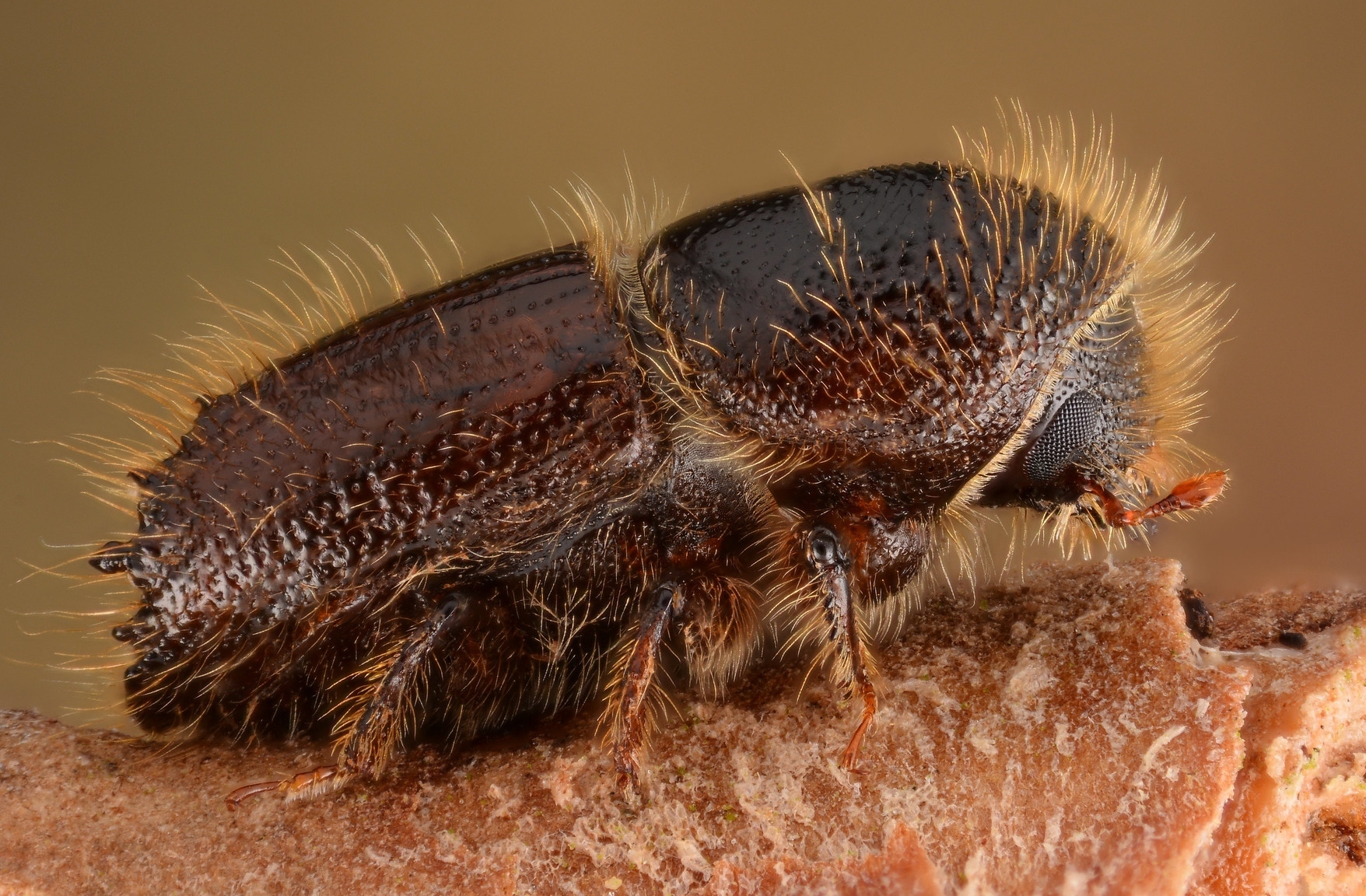Researchers have successfully mapped the entire genome of the Eurasian spruce bark beetle. The breakthrough paves the way for new research into bark beetles and better prospects for effective pest control of a species that can destroy more than 100 million cubic metres of spruce forest during a single year in Europe and Asia.
Mapping the genome of the Eurasian spruce bark beetle enables a far deeper understanding of how and why it has become a very successful forest pest. Among other things, the researchers’ analysis of the genome revealed that the Eurasian spruce bark beetle has an unusually large number of genes that help to break down the cell walls of plants. In contrast, it does not appear to have an elevated number of genes to enable it to rid its body of foreign substances, which is surprising as the resin in the trees is toxic to the insects.
The recently completed sequencing of the entire genome of the Eurasian spruce bark beetle, Ips typographus, could potentially pave the way for highly specific pest control using what is known as RNA interference (RNAi).
RNAi is a molecular biology tool which specifically suppresses the expression of a gene with high precision, by administering double-stranded RNA into the insect, through food for example. This eventually causes the protein production from the corresponding gene to temporarily stop or become reduced, without modifying the genome. The method can provide clear information about the roles played by specific genes in the biology of the bark beetle, a process which is now facilitated by the sequencing of the beetle’s entire genome.
In the future, it is hoped that the RNAi method will also be usable in practical pest control out in the forests.
“For example, you could suppress genes that have a direct effect on survival or focus on the genes that are crucial to bark beetle reproduction or their ability to perceive the pheromones used for mating and to attack spruce forests”, says Martin N. Andersson, associate professor at Lund University.
The genome-based method is species-specific, which means that it does not have any undesired, detrimental side-effects on other organisms.
“In North America, there are many other significant species in the same bark beetle genus, Ips. The Eurasian spruce bark beetle’s genome will become a sort of complementary map to help the Americans study their own indigenous species”, says Fredrik Schlyter, professor at the Swedish University of Agricultural Sciences, SLU.
Besides Lund University and SLU, researchers from the Czech University of Life Sciences, the Norwegian Institute of Bioeconomy Research, the Max Planck Institute for Chemical Ecology in Germany and SciLife in Uppsala took part in the study.
To study the genome of the Eurasian spruce bark beetle, the researchers conducted sibling mating over ten generations of beetles in the laboratory. This was done to obtain homogenous DNA with relatively few variations. They then extracted DNA from around 100 beetles. This was biochemically sequenced in small sections that were subsequently assembled using powerful computing. The researchers then compared the results with the genomes of other insects and analysed which genes had expanded and which had been reduced in the Eurasian spruce bark beetle relative to other closely related species. According to the researchers, their evaluations indicate that the genome is of a very high quality and comparable with some of the best studied genomes of other insect species such as the fruit fly and mosquito.
The article, entitled A highly-contiguous genome assembly of the Eurasian spruce bark beetle, Ips typographus, provides insight into a major forest pest has now been published in Communications Biology.
More information
Martin N. Andersson, associate professor
Department of Biology, Lund University
+ 46 46-222 93 44
+ 46 706-91 66 35
Martin_n.andersson@biol.lu.se
Fredrik Schlyter, professor in Chemical Ecology
Swedish University of Agricultural Sciences, Department of Plant Protection Biology and Czech University of Life Sciences, Faculty of Forestry and Wood Sciences
+ 46 708-73 53 33
fredrik.schlyter@slu.se
Author of photographs


